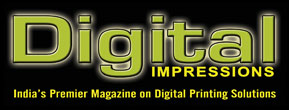Digital die cutting is a transformative technology that has
reshaped various industries, from packaging and signage to
fashion and crafts. Unlike traditional die cutting, which relies on
custom-made dies to cut shapes, digital die cutting uses software
and precision tools to cut designs directly from digital files. This
method offers unparalleled flexibility, speed, and accuracy,
making it a crucial tool in modern manufacturing and creative
applications. Team DI explores the advancements in digital laser
die-cutting, its applications in labels and cartons, and the benefits
it brings to the packaging industry.
One area frequently overlooked in discussions about
digitalization is post-press activities. Finishing often
becomes a bottleneck, particularly in paperboard packaging,
such as folding cartons and corrugated products. This
bottleneck is usually caused by issues with tooling, such as
lead times for creating dies and imperfections in the dies
themselves. Moreover, there is often a mismatch between
the printing capacity and die-cutting capacity, especially
when considering the ratio of setup time to runtime.
Digital die cutting eliminates the need for physical dies and
uses a computerized system to cut materials into desired
shapes and sizes. The technology primarily involves three
components: a computer, specialized cutting software, and a
cutting machine. This setup allows for rapid changes in
design and production without the costs and time
associated with traditional die-making.
As digital die cutting technology continues to evolve,
several emerging trends are shaping its future. These trends
reflect broader shifts in technology and consumer demand,
driving further innovation and application in various fields.
The demand for personalized products has driven
significant growth in digital die cutting. Consumers today
seek unique, customized items, from bespoke packaging
and personalized apparel to custom signage and home
decor. Digital die cutting facilitates this by allowing for easy
design modifications and short production runs without the
need for costly dies.
Its compatibility with a wide range of materials, including
paper, vinyl, fabric, leather, metal, and plastics has made it
indispensable in various industries like: Packaging for
custom boxes, labels, and promotional materials; Signage
for cutting vinyl and other substrates for outdoor and indoor
signs; Fashion for precise cutting of fabrics and patterns and
Crafts and Hobbies for intricate designs in scrapbooking,
card making, and more.
The evolution of digital die cutting technology has been
marked by several significant advancements. These
innovations have enhanced its capabilities, making it more
accessible and efficient for both industrial and personal use.
Applications of Digital Laser Die-Cutting
Digital laser die-cutting has a wide range of applications in
the production of labels and cartons. Here are some of the
most common uses:.
1. Custom Labels
The ability to create intricate and custom shapes makes
laser die-cutting ideal for producing labels for various
products. Whether for food packaging, cosmetics, or
industrial applications, manufacturers can design labels that
stand out on the shelf and convey essential branding
information effectively.
2. Packaging Solutions
Laser die-cutting is widely used in creating cartons and
packaging materials. The precision of the cuts ensures that
boxes fit together perfectly, reducing the risk of damage during shipping and handling. Additionally, the ability to
create unique shapes and designs allows brands to
differentiate their products in a crowded market.
3. Promotional Materials
Businesses often use laser die-cutting for promotional
materials, such as brochures, business cards, and point-ofsale
displays. The ability to create custom shapes and
intricate designs enhances the visual appeal of these
materials, making them more effective in capturing customer
attention.

4. Prototyping
The flexibility of digital laser die-cutting makes it an
excellent choice for prototyping new products. Designers
can quickly create samples of labels and packaging,
allowing for rapid testing and iteration before final
production. This agility is crucial in today’s fast-paced
market, where time-to-market can be a significant
competitive advantage.
Several leading manufacturers are at the forefront of digital
die cutting technology, providing innovative solutions for
diverse applications.
Kongsberg series offers digital cutting tables known for
their versatility and high precision, widely used in packaging
and signage. Zünd machines from a Swiss manufacturer
recognized for its digital cutting systems are celebrated for
their efficiency and adaptability across various materials.
Industrial scale Digital Die Cutting (i.e. true die cutters
making thousands of pieces per hour such as Highcon
Beam 3, not CAD tables) allows tooling-free die cutting of
cartons and POP displays.
As digital laser die-cutting continues to evolve, it is likely to
play an even more prominent role in the future of packaging
and labeling, driven by ongoing advancements in technology
and the increasing need for customization and sustainability
in the marketplace. Manufacturers who embrace this
technology will be well-positioned to thrive in an everchanging
landscape, delivering innovative solutions that
meet the needs of their customers. |

